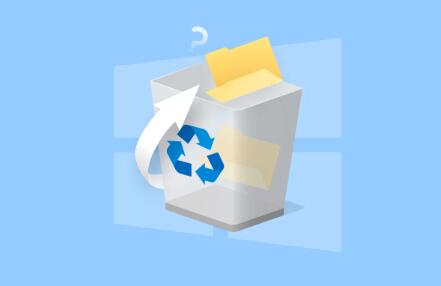Recovering deleted photos from a camera memory card can be a daunting task, but with the right approach and tools, it’s often possible to retrieve lost images.
1. Basics of Data Deletion
When you delete a photo from a memory card, it’s not immediately erased. Instead, the data is marked as deleted, and the space it occupies is flagged as available for new data. Until new data overwrites this space, recovery is possible.
2. Stop Using the Memory Card
As soon as you realize that photos have been deleted, stop using the memory card immediately. Continuing to use it increases the risk of overwriting the deleted files, which could make recovery more difficult or even impossible.
3. Assess the Situation
Determine the type of memory card you’re dealing with (e.g., SD, microSD, CF, etc.) and the file format (e.g., JPEG, RAW). This will help in choosing the right recovery tools and techniques.

4. Choose a Recovery Method
A. Using Recovery Software
Recovery software can scan your memory card for deleted files and attempt to recover them. Here are the steps involved:
Select a Recovery Tool: Some popular recovery tools include Recuva, EaseUS Data Recovery Wizard, PhotoRec, and Stellar Photo Recovery. Ensure the tool supports your memory card’s file system (e.g., FAT32. exFAT).
Download and Install the Software: Install the software on a different drive or computer to avoid overwriting any data on the memory card.
Connect the Memory Card: Insert the memory card into your computer using a card reader. Make sure the card reader is functioning properly.
Run the Recovery Software:
Launch the software and select the memory card from the list of available drives.
Choose the type of scan: Most software offers quick and deep scans. A quick scan is faster but might not find all recoverable files. A deep scan is more thorough but takes longer.
Start the scan: The software will search for deleted files and display a list of recoverable items.
Preview and Recover:
Preview the files if the software offers this option to ensure they’re intact.
Select the photos you want to recover and choose a recovery location. Save the recovered files to a different drive to avoid overwriting any remaining data on the memory card.
B. Using Professional Data Recovery Services
If the software method doesn’t work or if the memory card has physical damage, you may need to use a professional data recovery service. Here’s how to proceed:
Research Recovery Services: Look for reputable data recovery companies with experience in dealing with memory cards and a good track record of successful recoveries.
Contact the Service: Reach out to the service provider and explain the situation. They might provide guidance on how to send the memory card to them.
Prepare the Memory Card: Follow the company’s instructions for sending the card. It’s important to package it carefully to prevent further damage.
Await Evaluation and Recovery: The company will assess the card and inform you of the recovery possibilities and costs. If you agree to proceed, they will attempt to recover the photos and provide you with the recovered files.
5. Prevent Future Data Loss
To minimize the risk of losing photos in the future, consider these preventive measures:
Back Up Regularly: Regularly back up your photos to a computer or cloud storage. Automated backups can simplify this process.
Use Reliable Memory Cards: Invest in high-quality memory cards from reputable brands to reduce the risk of card failure.
Proper Ejection: Always eject the memory card safely from your camera or computer to avoid data corruption.
Avoid Physical Damage: Handle memory cards with care to prevent physical damage. Store them in a protective case when not in use.
6. Troubleshooting Common Issues
A. Memory Card Not Recognized
If your computer doesn’t recognize the memory card, try the following:
Check Connections: Ensure the card is properly inserted into the card reader.
Try a Different Reader: The card reader might be faulty. Try using a different one.
Check Disk Management: On Windows, go to Disk Management to see if the card is listed and has a drive letter assigned. If not, you may need to assign one manually.
B. Corrupted Memory Card
If the memory card appears corrupted:
Run Error Checking: Use the built-in error-checking tool in Windows or macOS to attempt repairs.
Use Data Recovery Software: Recovery tools can sometimes handle corrupted cards by scanning for recoverable data.
C. File System Errors
If the file system is damaged, you might need to use recovery software that can handle file system issues or seek professional recovery services.
Recovering deleted photos from a camera memory card requires a combination of the right tools, techniques, and preventive measures. By following the steps outlined above, you can maximize your chances of successfully retrieving lost images. Always remember to handle memory cards with care and keep regular backups to safeguard your precious memories.
About us and this blog
Panda Assistant is built on the latest data recovery algorithms, ensuring that no file is too damaged, too lost, or too corrupted to be recovered.
Request a free quote
We believe that data recovery shouldn’t be a daunting task. That’s why we’ve designed Panda Assistant to be as easy to use as it is powerful. With a few clicks, you can initiate a scan, preview recoverable files, and restore your data all within a matter of minutes.
Subscribe to our newsletter!
More from our blog
See all postsRecent Posts
- How to recover a deleted slide in powerpoint? 2025-02-27
- How to recover deleted capcut videos? 2025-02-27
- How to recover a file deleted from a shared drive? 2025-02-27










